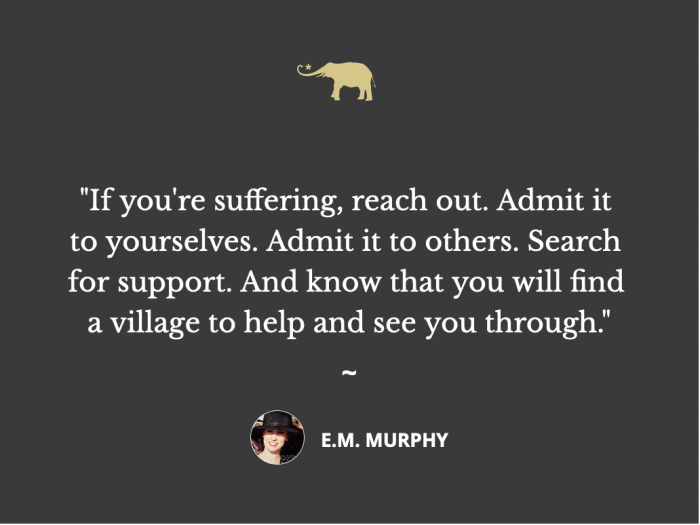It’s not always what you’re eating. It may just be what’s eating you.
We are surrounded by articles, books, and podcasts about diet and body image.
“How to lose weight.” “How to camouflage your muffin top.” “How to love your body at any size.”
We soak up the information, memorize the foods that speed up weight loss, and entertain the new exercise trends.
They tell us that we can lose 10 pounds in two weeks on one page but tell us to love our bodies (at any size) a few pages later.
The conflicting messages are enough to drive a person mad, leaving them more frustrated than satiated.
What we don’t see or hear much about are eating disorders.
We don’t hear much about the anorexics who either saved themselves with proper nutrition or starved themselves to death. We don’t hear much about the compulsive overeaters who don’t want to leave the house because they are overweight and filled with despair—disgusted with themselves yet helpless to stop.
We don’t hear much about the bulimics caught in the binge-purge cycle or the guilt and shame accompanying it. These are the people who look fine on the outside (average body weight) but fight like hell on the inside—every day.
That doesn’t seem to sell. That doesn’t seem to be of great interest. That seems to be…overlooked.
As a recovering bulimic, I want to shed light on the prevalence of eating disorders and their impact on individuals, families, and society.
In the United States, 20 million women and 10 million men suffer from a clinically significant eating disorder at some time in their life, including anorexia nervosa, bulimia nervosa, binge eating disorder, or EDNOS (Eating Disorder Not Otherwise Specified).
(Note: per the DSM-5, EDNOS is now recognized as OSFED: Other Specified Feeding or Eating Disorder.)
Like alcoholism, it’s one day at a time.
I fought like hell to rid myself of my eating disorder and succeeded for almost 20 years—until Christmas, 2019.
I remember the moment, the feelings, the recognition, and the fear.
“Where is this coming from? Why am I feeling out of control with food? Why is this happening?”
As a self-destruction expert, I knew the signs. Whether it had been food, alcohol, work, spending, or any other activity that risked abuse, I’d been there—I have the T-shirt.
And it’s one day at a time because I’d never predicted a time when I would struggle again. I was convinced that I’d overcome this—permanently. “I am not at risk of a slip or relapse. I succeeded.”
When I gained weight and had a life, I thought, “What an achievement! How wonderful to be a bit soft, pudgy, and—what?!—happy!”
I was thrilled. That was confirmation that I’d succeeded. The size four didn’t bring me more or less happiness than my chubby body did.
My relationship with food? Normal.
My relationship with my body? Comfortable.
My relationship with myself? Good.
But when it comes to addictions, has anyone stopped to consider how painful it is to live with an eating disorder? How do we differ from those who want to lose five pounds or get fit for an upcoming event?
Not to belittle alcoholism, but we don’t need booze.
I know how hard it is to stay away from alcohol. We all know of (or have) alcoholics in families. And we all certainly have the potential.
I’ve been down that road, and I’m grateful that it isn’t my drug of choice. However, I can abuse it from time to time—I’m well aware of my potential.
But food? We need it to survive.
We can live 8-21 days without food and water, yet up to two months if we have adequate water intake. That’s not a lot of time if we stop to think about it.
Food is intended to nourish our bodies and fuel our minds. It is intended to give us energy and help us heal. We share meals with friends and loved ones. Almost every celebration involves food and drink.
Yet, for those in the throes of an eating disorder, food becomes the enemy. It becomes an obsession, wanting to eat so badly and wanting to rid ourselves of every morsel simultaneously:
“When will I eat? How much? What if I can’t stop?
I can eat today. I can’t eat today. I’ll just have a little. I’ll work out later.
How many calories? If I have that for lunch, I’ll skip breakfast.”
And on it goes…
We grow consumed with food (or the lack thereof), our bodies, and our sickness.
Eating disorders are difficult, complicated, and painful. They rob people of their lives. They wreak havoc on the person and their people, even if others aren’t aware of the issue.
But what is most important is that people recognize that the origins of eating disorders are different for each individual.
For some, it’s society at large: the photos of models, the societal emphasis that thin will always be in, an expectation—not stated but implied.
For others, it’s deeper: a family member who made careless comments that planted the seeds for body hate. It was emotional, using food as an escape to distract oneself from the conflict in their lives. It was disregard when you were pudgy, and it was the validation of love when you were thin.
It was hell.
So this is for the anorexics, bulimics, and compulsive overeaters—those who suffer in silence and battle with their demons every day.
And the reality is—or my reality was—we are never cured. Even when we believe we are. The illness is dormant, awaiting the perfect moment to consume us again, taking over our lives—and our souls.
If you’re suffering, reach out. Admit it to yourselves. Admit it to others. Search for support. And know that you will find a village to help and see you through.
It’s not always what you’re eating. It may just be what’s eating you.









Read 8 comments and reply